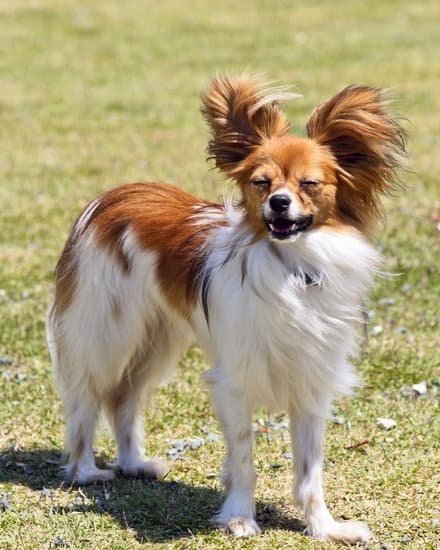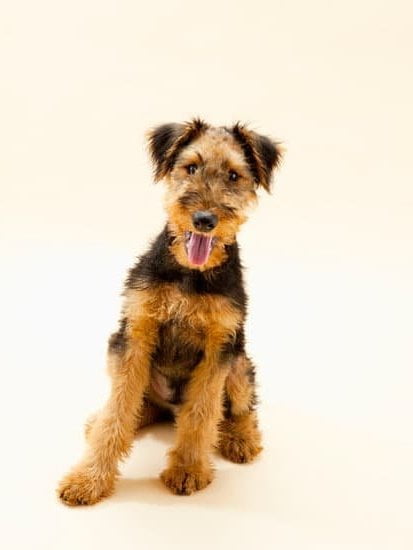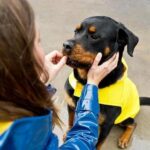Is your furry friend having bathroom accidents in the house? Are you looking for effective methods on how to train a dog to go to the bathroom in the designated area? Potty training is an essential aspect of a dog’s overall behavior and well-being. In this article, we will cover important tips and techniques to help you successfully train your dog to go to the bathroom in the right place.
Potty training is not just about teaching your pet where to relieve themselves but also about establishing a routine and creating a comfortable environment for them. By understanding the importance of potty training for dogs, you can effectively set ground rules, provide positive reinforcement, and address common challenges that may arise during the training process.
In addition to tips on setting up a routine and choosing a designated bathroom area for your dog, we will also explore the use of positive reinforcement such as treats and praise. Consistency is key when it comes to potty training, and we will discuss the significance of regular training sessions. Whether you have a puppy or an older dog, this article will provide valuable insights into successful potty training methods.
Setting the Ground Rules
Creating a routine for your dog’s bathroom breaks is an essential part of potty training. Consistency in setting ground rules for your dog’s bathroom habits can make the process much smoother and more effective. Here are some tips for establishing a routine that works for both you and your furry friend:
- Set specific times for bathroom breaks: Dogs thrive on routine, so it’s important to take them out at the same times every day. This could include first thing in the morning, after meals, before bedtime, and any other regular intervals that work for your schedule. By doing this, you are teaching your dog when it’s appropriate to go to the bathroom.
- Use cues to signal bathroom time: Whether it’s a verbal command or a specific action, using consistent cues can help your dog understand when it’s time to go. For example, saying “go potty” or ringing a bell before heading outside can help your dog connect the cue with the action.
- Monitor food and water intake: Pay attention to when your dog eats and drinks, as this can give you an idea of when they may need to go out. By regulating their feeding and watering schedule, you can predict when they will need to relieve themselves.
By following these guidelines and being patient with your pet, you’ll be on track to successfully train them in no time. This routine will not only make life easier for you but also provide consistency that will give your dog confidence in understanding how to fulfill their needs properly.
Choosing the Designated Bathroom Area
When it comes to potty training your dog, one of the most important steps is choosing the designated bathroom area. This will not only help your dog understand where they are supposed to go, but it can also make cleanup much easier for you. Here are some tips for picking the right spot for your dog to go:
- Consider accessibility: Choose an area that is easily accessible to your dog at all times. This could be a specific spot in your yard or a nearby patch of grass.
- Avoid high-traffic areas: It’s best to pick a spot that is away from high-traffic areas in your home or yard. This will give your dog privacy and help them feel comfortable when they need to go.
- Choose a spot with good drainage: If you’re designating an outdoor bathroom area, make sure it has good drainage to prevent puddles and messes.
Once you’ve chosen the designated bathroom area, it’s important to consistently take your dog to that spot whenever they need to go. This will help reinforce the idea that this is the appropriate place for them to relieve themselves.
Additionally, be sure to clean up after your dog promptly and thoroughly each time they go in their designated bathroom area. Leaving messes behind can confuse your dog and make it harder for them to understand where they should be going. With patience, consistency, and positive reinforcement, you can effectively train your dog on how to train a dog to go to bathroom in the designated spot.
Positive Reinforcement
When it comes to potty training your dog, positive reinforcement can be a powerful tool. Dogs respond well to praise and rewards, so using treats and verbal encouragement can help reinforce good bathroom behavior.
One effective method is to use treats to reward your dog when they go to the bathroom in the designated spot. As soon as they finish their business, offer them a small treat and give them verbal praise. This helps them associate going to the bathroom in the right place with positive feelings and rewards.
In addition to treats, using verbal praise and affection can also be beneficial. When your dog goes to the bathroom in the correct spot, shower them with praise in an enthusiastic tone. This positive reinforcement can help solidify their understanding of where they should be going.
It’s important to note that while treats and praise are effective tools for potty training, they should be used in conjunction with other aspects of training such as consistency and patience. Every dog is different, so finding the right balance of rewards and encouragement may take time. With patience and practice, you can successfully train your dog to go to the bathroom in the appropriate area.
| Positive Reinforcement Method | Benefits |
|---|---|
| Using Treats | Reinforces good behavior |
| Verbal Praise | Builds positive association |
| Affectionate Tone | Strengthens understanding of desired behavior |
Consistency Is Key
Potty training a dog takes time, patience, and most importantly, consistency. Establishing a regular routine for potty training sessions is crucial for helping your dog understand where and when to go to the bathroom. By following a consistent schedule, you can effectively communicate your expectations to your dog and reinforce good bathroom behavior.
The key to successful potty training is to take your dog outside to their designated bathroom area at the same times every day. This includes first thing in the morning, after meals, before bedtime, and any time they indicate that they need to go. By consistently providing opportunities for your dog to go to the bathroom outside, you can help them develop good habits and prevent accidents indoors.
In addition to regular bathroom breaks, it’s important to be consistent in how you praise and reward your dog for going potty outside. Using positive reinforcement techniques such as treats, verbal praise, or playtime can help reinforce the desired behavior and motivate your dog to continue going to the bathroom in the right place.
By consistently rewarding your dog for good bathroom behavior, you can encourage them to learn how to train a dog to go to the bathroom where they’re supposed to.
| Regular Bathroom Break Times | Positive Reinforcement Techniques |
|---|---|
| First thing in the morning | Treats |
| After meals | Verbal praise |
| Before bedtime | Playtime |
Dealing With Accidents
Accidents are inevitable during the potty training process, but how you handle and clean up after your dog’s messes can significantly impact their learning progress. It is important to remain calm and patient when accidents occur and focus on correcting the behavior rather than scolding the dog.
Handling Accidents
When you catch your dog in the act of eliminating in the wrong place, it is important to interrupt them with a firm “no” and immediately take them to the designated bathroom area. Avoid punishing or yelling at your dog as this can create fear and hinder their progress. Instead, redirect them to the correct spot and wait for them to finish before offering praise and rewards.
Cleaning Up Messes
It is essential to thoroughly clean up any accidents to eliminate lingering odors that could attract your dog back to the same spot. Use an enzymatic cleaner specifically designed for pet messes to effectively break down urine and feces odors. This will help prevent repeat accidents in the same area.
Preventing Future Accidents
To prevent future accidents, closely monitor your dog’s behavior, especially after meals, playtime, and naps. Take them outside frequently and consistently reinforce the designated bathroom area as the appropriate place to go. As your dog becomes more proficient at using that spot, gradually increase their freedom inside the house under supervision.
By handling accidents with patience and consistency, you can effectively teach your dog where it is appropriate to go to the bathroom. Remember that potty training takes time and effort but staying positive and consistent throughout the process will set your dog up for success in the long run.
Special Considerations for Puppies
Puppies require special considerations when it comes to potty training. They have smaller bladders and less control over their bodily functions compared to adult dogs. Therefore, it’s important to have additional strategies in place to successfully train them to go to the bathroom in the right spot.
Establishing a Strict Routine
One of the most important aspects of potty training a puppy is to establish a strict routine for bathroom breaks. Puppies generally need to go outside shortly after waking up, after eating or drinking, and before going to bed. By taking your puppy out at these key times consistently, you can help them learn when and where they should go.
Supervision and Crate Training
Since puppies are still learning bladder control, it’s crucial to keep a close eye on them at all times. If you can’t supervise your puppy, consider crate training them. Dogs naturally avoid soiling their living space, so keeping them confined in a crate when you can’t watch them helps prevent accidents inside the house.
Using Positive Reinforcement
Puppies respond well to positive reinforcement when it comes to potty training. Use treats and praise to reward your puppy every time they go to the bathroom in the designated area outside. This will help them associate going outside with positive experiences and encourage them to continue doing so regularly.
By following these additional tips for potty training young dogs, you can set your puppy up for success in learning how to go to the bathroom in the right place. With patience, consistency, and positive reinforcement, you’ll be able to effectively train your puppy how to go potty on command.
Troubleshooting
Potty training a dog can be a challenging and frustrating task, especially when you encounter common challenges along the way. However, with patience, consistency, and the right approach, these challenges can be overcome. In this section, we will address some of the most common potty training challenges that dog owners face and provide practical tips on how to address them.
One common challenge that many dog owners face is their dog refusing to go to the bathroom in the designated area. This can be frustrating for pet owners who are trying to establish a routine for their dogs. One effective way to overcome this challenge is to use positive reinforcement.
When your dog successfully goes to the bathroom in the designated area, be sure to reward them with treats and praise. Over time, they will associate going to the bathroom in that spot with a positive outcome.
Another common challenge in potty training dogs is dealing with accidents inside the house. It’s important for pet owners to remain calm when accidents happen and avoid punishing their dogs for these mishaps. Instead, focus on cleaning up the mess thoroughly using an enzymatic cleaner to eliminate any lingering odors that may attract your dog back to the same spot.
Additionally, some dogs may exhibit anxiety or fear when it comes to going potty outside, which can hinder their potty training progress. To overcome this challenge, gradually introduce your dog to outdoor environments and use positive reinforcement techniques such as treats and praise when they go potty outside. With patience and consistent practice, your dog will eventually become comfortable with going potty in outdoor spaces.
Successfully addressing these common potty training challenges will ultimately lead to a well-trained and well-behaved furry companion who understands where and when it’s appropriate to go to the bathroom.
Conclusion
In conclusion, successfully training your dog to go to the bathroom on command can bring about numerous benefits for both you and your pet. By understanding the importance of potty training, setting ground rules, choosing a designated bathroom area, using positive reinforcement, maintaining consistency, and addressing accidents and other challenges, you can ultimately achieve the goal of having a well-trained dog when it comes to bathroom habits.
Once your dog is fully potty trained, you will experience the convenience of not having to constantly clean up messes around the house. Additionally, you will enjoy a stronger bond with your pet as they learn to follow your commands and understand what is expected of them. This can lead to a happier and more harmonious relationship between you and your beloved furry friend.
Furthermore, successfully potty training your dog not only benefits you directly but also contributes to responsible pet ownership. A well-behaved pet reflects positively on their owner and ensures that they can be welcomed in various social settings without causing any disruptions. Ultimately, by investing time and effort into properly training your dog to go to the bathroom, you are creating a happier and healthier environment for both yourself and your canine companion.
Frequently Asked Questions
How Do You Train a Dog to Tell You It Has to Pee?
Training a dog to tell you it needs to pee can be accomplished through consistent and positive reinforcement. One way is to establish a cue or signal, such as ringing a bell, and then rewarding the dog when it uses the signal to indicate its need to go outside.
How Do You Stop a Dog From Peeing and Pooping in the House?
To stop a dog from peeing and pooping in the house, it’s important to address any underlying medical issues first. Once that’s ruled out, training and supervision are key. Establish a regular potty schedule, provide plenty of opportunities for outdoor breaks, and reward appropriate elimination behavior.
How Long Does It Take to Bathroom Train a Dog?
The time it takes to bathroom train a dog varies depending on factors such as the dog’s age, breed, and individual temperament. On average, it can take anywhere from a few weeks to several months for a dog to become fully potty trained. Consistency and patience are crucial throughout the process.

Welcome to the blog! I am a professional dog trainer and have been working with dogs for many years. In this blog, I will be discussing various topics related to dog training, including tips, tricks, and advice. I hope you find this information helpful and informative. Thanks for reading!





